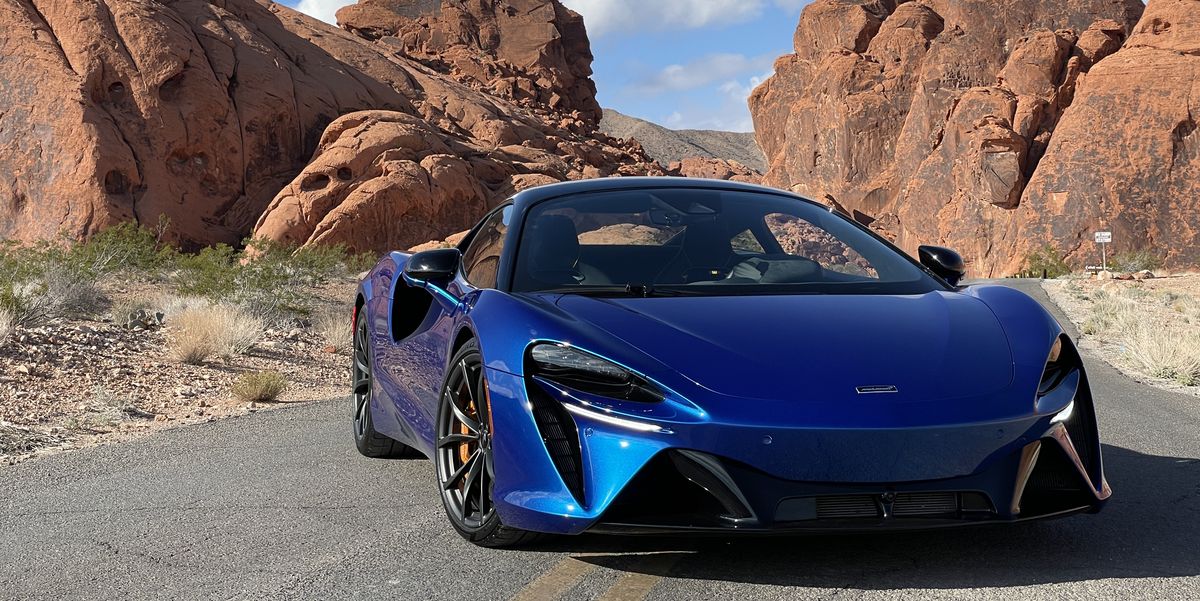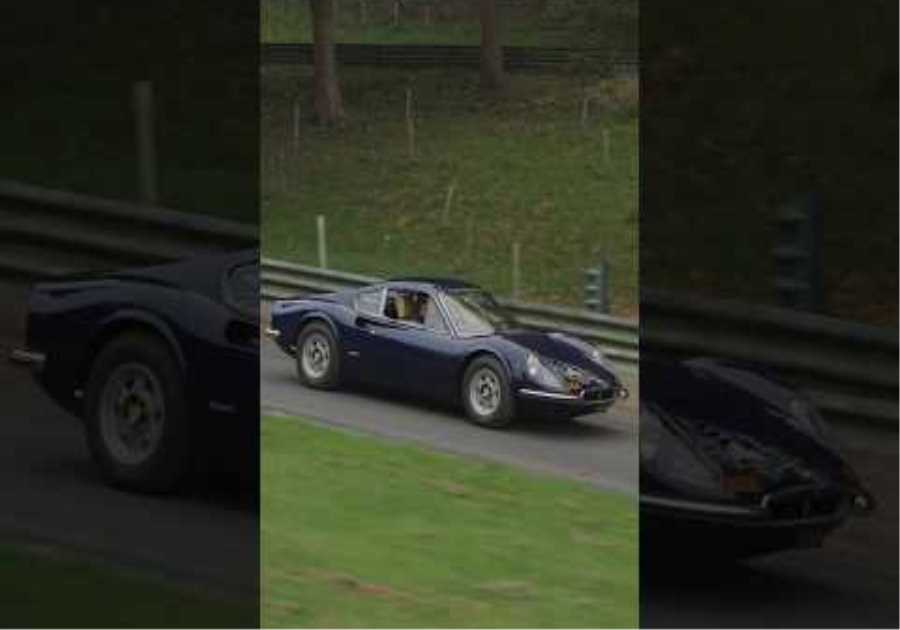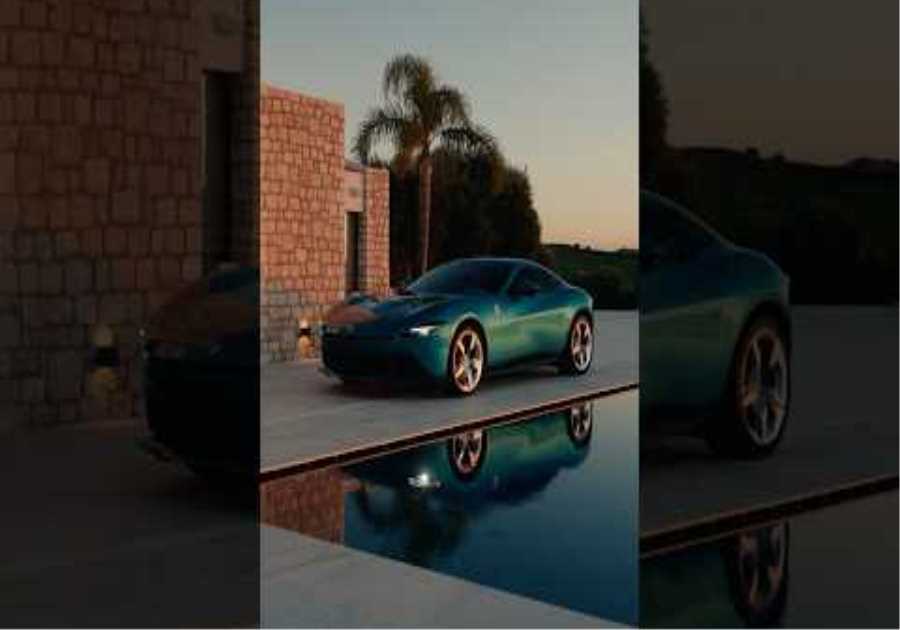
Will Sabel Courtney
While there may be some doom and gloom around the state of McLaren Automotive these days — ie selling off their headquarters only to rent it back in order to scrape together some short-term capital — it’s worth pointing out just how monumental a feat the company’s continued existence even is. History is littered with upstart supercar makers who thought they could find fame and fortune with a sleek mid-engined design and a couple generous investors, only to crash and burn in sometimes-spectacular, sometimes-pathetic fashion.
McLaren, however, has managed to do what no brand since Lamborghini was created out of Ferruccio’s rage back in 1963 has pulled off: create a credible Ferrari rival. Inspired by the legacy of the McLaren F1 and the carmaker’s long Formula 1 racing history, McLaren Automotive was formed back in 2010 and launched its first car, the MP4-12C, a year later. Since then, the company has grown to produce an array of supercars and hypercars.
In recent years, the lineup has generally consisted of three tiers: Sport Series (the 570S and its variants, such as the 600LT); Super Series (the MP4-12C-cum-12C that was facelifted into the 650S, followed by the 720S and the spicier 765LT); and Ultimate Series (hypercars like the P1, Speedtail and Senna). That plan, though — like quite a few at McLaren recently — has come to an end. Today, the entry-level model is the GT hatchback; the Sport Series is gone. Above the GT lie two supercars: the existing 720S, and the all-new Artura that sits ever-so-slightly below it.
Advertisement – Continue Reading Below
If you’re asking in terms of what makes it special by the standards of the overall automotive realm, well, take a look: it’s a mid-engined supercar, a category that includes many of the most unique, exciting cars money can buy.
If you’re asking what makes it special versus other McLarens, though, there’s plenty that isn’t obvious. The Artura is the first plug-in hybrid production car to come from the brand (previous ones like the P1 hypercar were limited-run models), and its engine — a 3.0-liter twin-turbo V6 — marks the first time a McLaren Automotive product has used a six-cylinder engine. It’s the first to use a limited-slip differential, the first to use an eight-speed dual-clutch gearbox (and the first to do without a reverse gear — when you back up, it just runs the electric motor the other way), the first to boast a redesigned, more user-friendly interior, and the first to use the brand’s new McLaren Carbon Lightweight Architecture chassis. On top of all that, the Artura is the first regular production car from McLaren Automotive to boast a proper name instead of a spoonful of alphanumeric soup for a moniker.
It’s also the first new Macca to arrive under the reign of the company’s current CEO, Michael Leiters. The former holder of important chairs at Porsche and Ferrari, Leiters has already brought what he learned at those esteemed brands to bear with the Artura. “In the past we accepted a non-mature product and would launch it and deliver it to the customers. The Artura was the first project where we didn’t do that,” he told Evo. “We saw that the car wasn’t mature, so we stopped deliveries…to fix our quality problems.”
Shocker: it’s a blast. The combined output of the electric motor and the twin-turbo V6 is 671 horsepower and 531 lb-ft of torque, which would be a mighty slug of power in any car — but is truly beastly in one that weighs in at 3,303 pounds, according to McLaren.
It’s not just about total power, though — it’s the way the two motors work together that helps make the Artura feel so all-conquering. The electric motor helps fill in the troughs in the torque curve, giving this small engine the fluid, easy going shove of a larger displacement one. It’s so easy to lean on this rush of midrange go, especially when driving with the eight-speed gearbox in manual mode, you almost forget that the V6 spins all the way to 8,500 rpm.
As you’d expect of a modern supercar, the roadholding limits are remarkably high. Given ample visibility and no traffic, it’s easy to crack along a fast two-lane at a sustained double-the-limit or more. What comes as a pleasant surprise, though, is the steering. McLaren stuck with a hydraulic power steering system instead of the electric ones used by most new cars, and the result is a delightful fistful (or two) of old-fashioned weight and feel. It’s the sort of added sensation you don’t realize how much you miss in new cars until you have the chance to sample one that still has the traditional setup.
On the track, the Artura proves equally happy to utterly haul ass through turns and down straights. McLaren had us take turns ripping down the short course inside Las Vegas Motor Speedway’s oval; Even short-shifting a bit, I was topping 130 mph on the 1,200-foot straight. Push hard into the bends, and the balance stays quite neutral, resisting any urge for understeer or oversteer unless really prodded in that direction — and making it easy to catch any instances of the latter.
Part of what helped McLaren define itself in its early days a decade ago was that, for its series cars, its commitment to performance came hand in hand with the desire to make sure its cars were easy to live with — at least, as easy as a low-slung carbon-fiber-bodied missile with rising doors can be. The Artura stands by that tradition; it’s docile and easy to putter around in for everyday driving.
But it’s the PHEV powertrain brings a new dimension to that puttering-around capability. With the battery fully charged, the Artura can do around 10 miles of electric-only driving at speeds of up to 81 mph. Interestingly enough, if you’re in electric-driving mode (one of the four options available from the powertrain mode selector , the others being Hybrid, Sport and Track), the e-motor’s 94 hp and 166 lb-ft are all you’re going to get no matter how hard you hammer the right pedal; there’s no kickdown function to bring the gas engine online for a quick pass. (McLaren says this was to keep drivers from accidentally jumping from less than 100 ponies to an unexpected 671, which makes a certain degree of sense.) And don’t be afraid to use it, either; the engine recharges the electric motor on the go if you can’t spare a couple of hours to juice it up on a Level 2 plug.
At first glance, it looks like a pretty familiar McLaren interior: giant carpeted sill to climb over, three-point steering wheel with clicky paddle shifters mounted to it, vertical infotainment screen, toggle switch gear shifter. Take a second glance, though, and you’ll start to see there’s quite a bit of innovation here. Look past the steering wheel, for example, and you’ll see not just a redesigned instrument panel, but the redesigned and relocated switches for the powertrain and suspension settings mounted high on either side. They operate much like the circular knobs mounted close to the radio in other Maccas, but they’re easier to find and easier to manipulate, especially on the fly.
The infotainment screen, however, is the most obvious — and appreciated — change. Maccas have long suffered from an outdated, phablet-esque display that felt strictly two-thousand-and-late; latency could be measured in seconds, and the most advanced connectivity it could pull off was Bluetooth pairing. (I shouldn’t use the past tense here, actually; the system endures in the likes of the 720S and other models.)
With the Artura, McLaren finally brought their infotainment into the modern era. The display both looks and acts much like a giant Apple Watch, all the way down to the volume / control knob on the right that looks like a crown. The user interface is still a bit unfriendly, compared to the easy operation of many infotainment setups these days — but now that it includes Apple CarPlay and Android Auto, you won’t need to delve into it all that often.
The Artura’s seats are worthy of note, too. At six-foot-four with a three-foot inseam, mid-engined cars usually wind up inducing leg pain after somewhere between 60 and 120 minutes; the lack of space forces my lower limbs into a bowed position, which in turn presses my quadriceps into the (usually very firm) bolsters on the sides of the bottom of the seat and cuts off circulation. Not so in the Artura, at least when equipped with the heated memory comfort chairs of my tester. Even over the course of the better part of a day spent behind the wheel, my legs never once suffered a twinge. (My back did, however, but that was more from a poor decision to contort myself out of the car at a funny angle.)
If your immediate response is a snide crack along the lines of a decent house in the Midwest, well, you’re probably not the Artura’s target demo.
That said, the number of fancy & fast sports cars that would go toe-to-toe with it on specs is shorter than you might think, at leasr for the time being. The Mercedes-AMG GT is in a bit of a transitional period right now — production of the old version wrapped earlier this year, and a new one based on the latest Mercedes-AMG SL-Class is still at least a few months away — but its top-trim models will likely jockey for the attention of potential buyers. The Audi R8 is also leaving production, and its replacement will likely use batteries instead of distilled fossil juice.
Still, there are a couple of contenders left. The Porsche 911 Turbo / Turbo S or 911 GT3 are likely to court more than a few of the same buyers as the Artura; same goes for the Lamborghini Huracan Evo RWD. And on top of that, there’s also the Ferrari 296 GTB / GTS, which came out this year and also packs a RWD PHEV powertrain with an eight-speed auto and a new 3.0-liter twin-turbo V6 — even though that car costs around $100,000 more to start, packs 819 hp to the Macca’s 671, and competes one rung higher in the ever-more-finely-hair-splitting supercar market.
That said, while the F-car might sit higher than the Artura in terms of price and power (and, many might argue, pedigree)…on the street, the difference between them isn’t as wide as the Ferrari fans might think. Sure, the 296 is a tick quicker, but at these levels of power and performance, it’s like comparing different calibers of bullet; a .357 Magnum might be faster than a 9mm, but by human standards, both are ridiculously fast.
Perhaps the more interesting — and more threatened — foe is an intramural one: the 720S. While it’s ostensibly the superior performance machine, what with its extra power, fancy anti-roll tech and so forth, the Artura’s advanced, flexible powertrain and the giant improvement in accommodations means it’s a much more enjoyable place to spend time, only a hair slower — and 30 percent cheaper than his older brother. I know which way I’d spend my cash.
Base Price / Price as Tested: $237,500 / $278,025
Powertrain: 3.0-liter twin-turbo V8 + 71-kW electric motor; eight speed automatic; rear wheel drive
Horsepower: 671
Torque: 531 lb ft
EPA Fuel Economy: 18mpg gas mode, 39mpg-e electric mode
seat: 2
LEARN MORE
Don’t fear the hybrid V6. Maranello’s latest speed machine is every bit what a Ferrari should be.
READ THE STORY
Advertisement – Continue Reading Below






